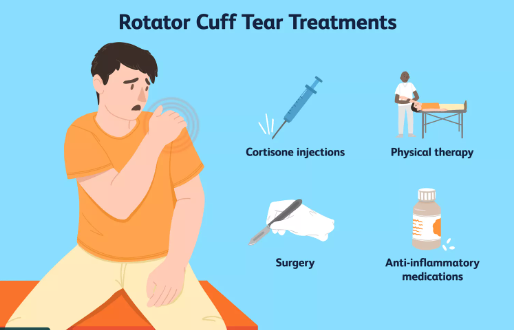6 common bone and joint disorders in pregnant women
By Jonathan Cluett, MD
Medically reviewed by Renita White, MD
Expectant mothers often need the care of an orthopedic specialist as well as their OB/GYN.1 Pregnancy can place a great deal of stress on a woman's body because of the added weight and position of the baby as well as physiological changes that can exacerbate an existing joint or bone problem. Many conditions that arise can also be related to the health and weight of the mother prior to the pregnancy.
Here are six of the most common orthopedic conditions seen in pregnancy.
1
Lower Back Pain
Westend61 / Getty Images
More than half of all pregnant women experience significant lower back pain.2 Both the weight of the baby and the awkward distribution of weight can cause rapid muscle fatigue and may lead to the development of muscle spasms, which are sometimes severe.
While treating lower back pain can be difficult during pregnancy, problems seldom linger after the delivery. Having a strong back before pregnancy can help prepare you for the physiological changes ahead. Similarly, back-strengthening exercises during the first and second trimesters can often pay off during the latter half of your pregnancy. Modifications may be needed for exercises performed during pregnancy, so check with your healthcare provider or physical therapist first.
2
Carpal Tunnel Syndrome
Kohei Hara / Getty Images
Carpal tunnel syndrome is a condition in which the median nerve of the wrist is pinched. Typically, people with carpal tunnel syndrome will complain of pain, tingling, and numbness in the hand and fingers.
Carpal tunnel syndrome can be exacerbated due to the retention of fluids during pregnancy, especially in the third trimester. It can be further burdened if you gain excessive weight, highlighting the need for reasonable weight control.3
Carpal tunnel syndrome can often be treated with night splints, ice compresses, and cortisone injections if needed. The condition typically improves following the delivery of the baby.
3
Plantar Fasciitis
Natalie Kauffman / Getty Images
Plantar fasciitis is the inflammation of a thick band of tissue, called the fascia, that connects the heel bone to the toe. Often referred to as a heel spur, plantar fasciitis can cause a stabbing pain in the heel and can be associated with rapid weight gain during pregnancy.
It can often be worse in the morning and during the latter stages of pregnancy. Most cases of plantar fasciitis can be treated at home with ice application, orthopedic shoe inserts, night splints, and regular foot massage. Cortisone shots are sometimes given if the pain is severe or interfering with mobility.
4
Meralgia Paresthetica
Andre Perlstein / Getty Images
Meralgia paresthetica is a relatively uncommon condition, but one that is seen during pregnancy and in people who are overweight. The condition is caused by the compression of the lateral femoral cutaneous nerve, which supplies sensation to the upper leg.
When the baby grows, the pressure against the nerve can create a notable patch of numbness on the thigh as well as tingling or burning sensations. If the symptoms are severe, cortisone injections around the nerves can often help.
Like many of the other orthopedic conditions, meralgia paresthetica will usually resolve on its own after the delivery.
5
Osteitis Pubis
MedicalRF.com / Getty Images
Osteitis pubis is an inflammatory condition affecting the bones at the front of the pelvis, which are called the pubic symphysis. This junction of these major bones can often become inflamed during pregnancy due to the added weight and position of the developing baby. The ligaments in this area can also be affected by hormonal changes that allow ligaments to become more lax in preparation for childbirth.
Ice or heat application, nonsteroidal anti-inflammatory drugs (NSAIDs), or simply being off your feet can significantly reduce the groin pain and inflammation associated with osteitis pubis.
6
Transient Osteoporosis of the Hip
Another hip condition associated with late-term pregnancy is transient osteoporosis. This condition is one in which pregnancy can cause temporary bone loss that significantly weakens the hip joint. The cause is not entirely known, but hormones, weight-bearing stress, and the obstruction of small blood vessels around the hip are considered contributing factors.
The condition is characterized by the sudden onset of pain, typically in the front of the thigh, the groin, the side of the hip, or the buttock.
Treatment may involve the use of crutches or a walker. NSAIDs can help treat pain, while nutrition and calcium supplementation may prevent excessive bone loss.
Sources
Bhardwaj A, Nagandla K. Musculoskeletal symptoms and orthopaedic complications in pregnancy: pathophysiology, diagnostic approaches and modern management. Postgrad Med J. 2014 Aug;90(1066):450-60. doi: 10.1136/postgradmedj-2013-132377
Pennick V, Liddle SD. Interventions for preventing and treating pelvic and back pain in pregnancy. Cochrane Database of Systematic Reviews. 2013:1465-1858. doi:10.1002/14651858.CD001139.pub3
Ablove RH, Ablove TS. Prevalence of carpal tunnel syndrome in pregnant women. WMJ. 2009 Jul;108(4):194-6.
By Jonathan Cluett, MD
Jonathan Cluett, MD, is board-certified in orthopedic surgery. He served as assistant team physician to Chivas USA (Major League Soccer) and the United States men's and women's national soccer teams.





Post comments